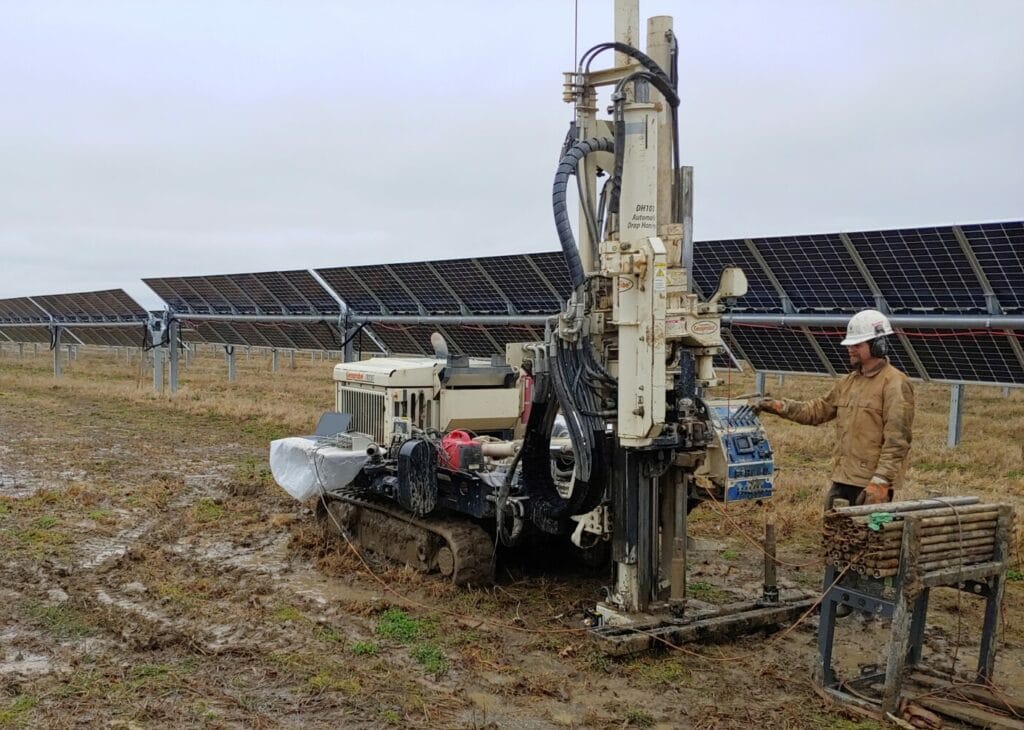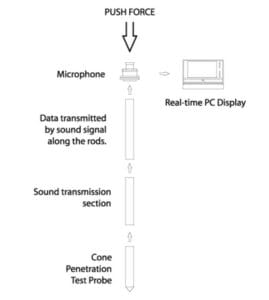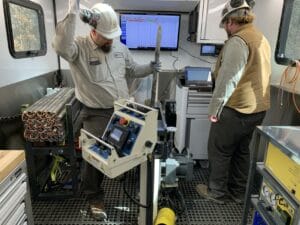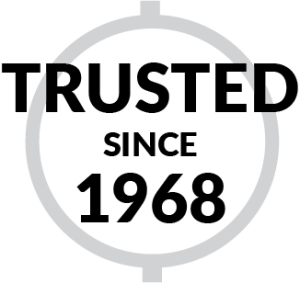
By: Jon O’Brock, P.E., Project Manager and Joe Klumpstra, Project Geologist – Direct Image
Geotechnical testing and sampling methods to evaluate subsurface conditions are ever evolving to provide additional parameters for engineering analysis while increasing study efficiency. The Standard Penetration Test (SPT, ASTM D1586) has been the preeminent sampling method in the United States since its initial development beginning in the early 1900s. The popularity of SPT is due to the wide availability of this test method from test drilling companies and the comfort level geotechnical engineers have in the method. SPT is used for empirical N-value correlations to support bearing and settlement evaluations and a host of other engineering analyses while allowing for a sample of in-situ soil to be collected for subsequent classification and laboratory testing. The Cone Penetration Test (CPT, ASTM D3441) is a complimentary test method, originally developed in the Netherlands in the 1930s, widely utilized to this day throughout Europe and gaining popularity in the United States due to its ability to collect a wide range of continuous geotechnical parameters with depth with production on the order of three times that of conventional SPT sampling.
How does CPT work?

CPT is performed by pushing an instrumented probe into the ground with hydraulic pressure while collecting data from various sensors and recording the data electronically with depth for later presentation and analysis. A CPT probe includes a conical tip connected to a load cell to measure point-bearing resistance, a friction sleeve connected to a separate load cell to measure frictional resistance, and a pressure transducer to measure pore pressure immediately above the cone. From these three measurements, various engineering properties can be estimated based on empirical correlations which are the result of substantial research. Some of the typical data collected include cone resistance, friction ratio, pore pressure, N60 values, and soil index. In addition to the sensors described, seismic CPT cones are now available. These cones contain an internal geophone, enabling rapid evaluation of shear wave velocity with depth. The evaluation is essential for seismic site class determination. Shear waves are generated at the ground surface using a sledgehammer and striking block.
History of CPT
Initially, CPT was a completely mechanical test involving complicated push rods and casings to transfer forces to manual measurement instruments at the surface. With the advent of electronic CPT cones and computer-based data collection systems in the 1980s, CPT investigations were significantly simplified which made the technique cost-effective compared to conventional sampling. CPT is well suited for use in soft soils due to the comparative difficulty of conventionally sampling these materials and relatively straightforward correlations. Beginning in the 1980s, additional correlations have been developed for a wide variety of soil conditions that cover most geologic conditions.
Key benefits of CPT are increased production and associated study cost savings relative to conventional SPT sampling while collecting continuous geotechnical data with depth. Disadvantages of CPT relative to SPT include the lack of a collected sample and very dense/hard soil and obstructions (cobble, boulder) which may prevent the probe from being pushed to the target depth. As a result, CPT is not always an appropriate test method for all midwestern soils, and understanding local geology is important as a part of investigation planning.
Why do MTC & MATECO use it?
Although CPT is useful on its own, we often develop study scopes that include both SPT and CPT testing to allow for the collection of complimentary data while controlling the overall efficiency of our studies.
Through strategic placement of SPT and CPT borings, we can decrease the overall study duration which decreases overall study cost while collecting more geotechnical data than SPT would accomplish on its own.
MATECO and MTC have utilized the CPT for peat investigations, dam projects, and a variety of different geotechnical investigations. Projects where CPT has been especially beneficial include large developments encompassing many acres of property which would normally require the performance of many SPT borings and an associated lengthy study duration and increased study cost. Cohesive (clay) sites where significant amounts of grade raise fill are proposed have been a particular benefit for CPT where excessive long-term consolidation settlement from grade raise fill is a concern. CPT, unlike SPT where non-continuous sampling is common, can directly estimate the location of drainage paths within the cohesive strata, allowing the geotechnical engineer to more accurately predict the time rate of settlement to understand construction schedule impacts and whether alternative options, such as wick drains, may be beneficial to decrease the duration over which primary consolidation will occur.
MATECO and MTC utilize two CPT cones, a standard CPT cone and a seismic CPT cone, both with a 100Mpa tip resistance, 1Mpa sleeve resistance, and 2Mpa porosity disc. We always keep both on-site to allow for less downtime if values are not able to calibrate correctly or technical difficulties are encountered, we can switch out probes and continue seamlessly. MATECO and MTC utilize a 20-ton ‘crawler’ rig on the vast majority of projects allowing for better efficiency throughout the site. We also have a fleet of several other drill rigs able to push our CPT cones. These drill rigs allow us to account for different variables when we are not able to use our 20-ton crawler. These other rigs allow us to get into tighter spaces where access is limited but require more setup time.
CPT is a tool that allows us to relentlessly commit to higher standards and provides overall higher-quality service to our clients. We look forward to discussing how CPT could be beneficial for the study of your project site.



